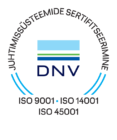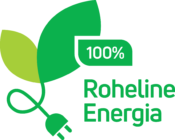Nordecon entered into an agreement with the Kohila municipality-owned water company Kohila Maja OÜ last week which will see the company designing and constructing a water treatment plant for the town to the value of 2.21 million euros. Starting this spring, Nordecon will also be reconstructing the town’s water and sewage networks as part of its water economy project.
"This is the second contract we’ve signed as part of the reconstruction work on the water and sewage networks in Kohila," explained Avo Ambur, a member of the management board of Nordecon AS. "Not only will we be completing construction of the town’s water utilities, to a value of 4.9 million euros, but we also won the tender for the construction of the water treatment plant with our offer of 2.21 million euros. Which, in the old money, means we’re investing more than 100 million kroons in new infrastructure for the town."
Ambur says Kohila will obtain a brand new water treatment plant meeting all current technical and technological requirements, as well as a fully functional silt processing system and a complex for aerobic silt sterilisation. The Vetuka waste water pumping station will also be reconstructed. Building work is scheduled for completion by October 2012.
"Such a large-scale renewal of the water system in the town means that a certain degree of inconvenience for residents is inevitable, when the water is off, for example, or roads are blocked," Ambur conceded. "But we hope the townsfolk will be understanding, given the circumstances – we won’t only be replacing sections of piping that are becoming unusable, but we’ll be adding significantly to what’s already there, too. All of which will mean high-quality drinking water and sewage utilities for every household in Kohila from next year on."
The project will improve the everyday lives of more than 2000 people in Kohila and the neighbouring villages of Masti and Pukamäe. Once completed, it will make it possible for every residence to be connected to the water and sewage networks. 59% of those living in the area are currently connected to the water network, and 39% to the sewage network.









